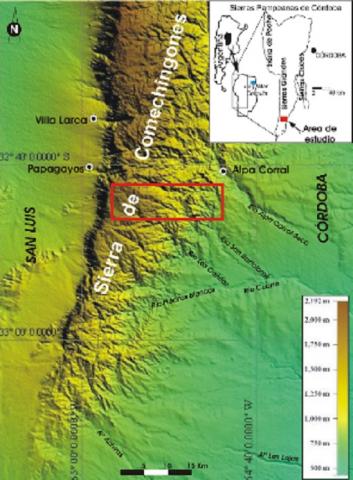M. Jimena Andreazzini, Susana B. Degiovanni, Aldo R. Prieto, Alfonsina Tripaldi, M. Elisa Luque
2 020
Andean Geology 47 (1): 77-109
Wet-meadows are wetlands of high environmental value and common in the Patagonia, Cordillera de los Andes and Pampean Ranges of Argentina. Particularly, the studies about the functioning and dynamics of wet-meadows are still insufficient and partials in Pampean Ranges. In this paper we analyze the geological-geomorphological factors that influenced the origin, distribution, morphometry and dynamics of wet-meadows in highlands of the southern Comechingones Range (Pampean Ranges of Córdoba, Argentina). A paleoenvironmental reconstruction from sedimentological, palynological, diatomological and chronological records of one of these systems is also proposed. The study area is located at an erosion paleosurface developed previously to the andean orogeny, on an igneous-metamorphic basement rocks. This paleosurface is preserved in the eastern slope of the Comechingones Range and shows different degree of fluvial incision. Most wetmeadows are linked to geomorphological environments with low morphodynamic activity, especially in the granitic rocks and loessic/loessoid deposits preserved in summit plains. The main source of sediments for wet-meadows is the reworking of Quaternary loessic/loessoide sequences. The wetmeadow paleorecords suggests the persistence of wetlands in the Comechingones Range highlands during most of the Holocene, with contractions and expansions in response to environmental variability. The Holocene climate conditions were variable, mainly related to changes in water availability and temperature. A drier period than the current, at least temporarily, took place between ca. 7,000 and 4,700 cal. years BP (6,400 and 4,100 14C years BP). Climatic conditions similar to the current ones were likely established since 4,700 cal. years BP (4,326 14C years BP). During the last centuries, incision and drainage networks integration processes, promote the removal of several wetlands, especially since 1,970s due to precipitation increasing and, subordinately, frequent wildfires.

